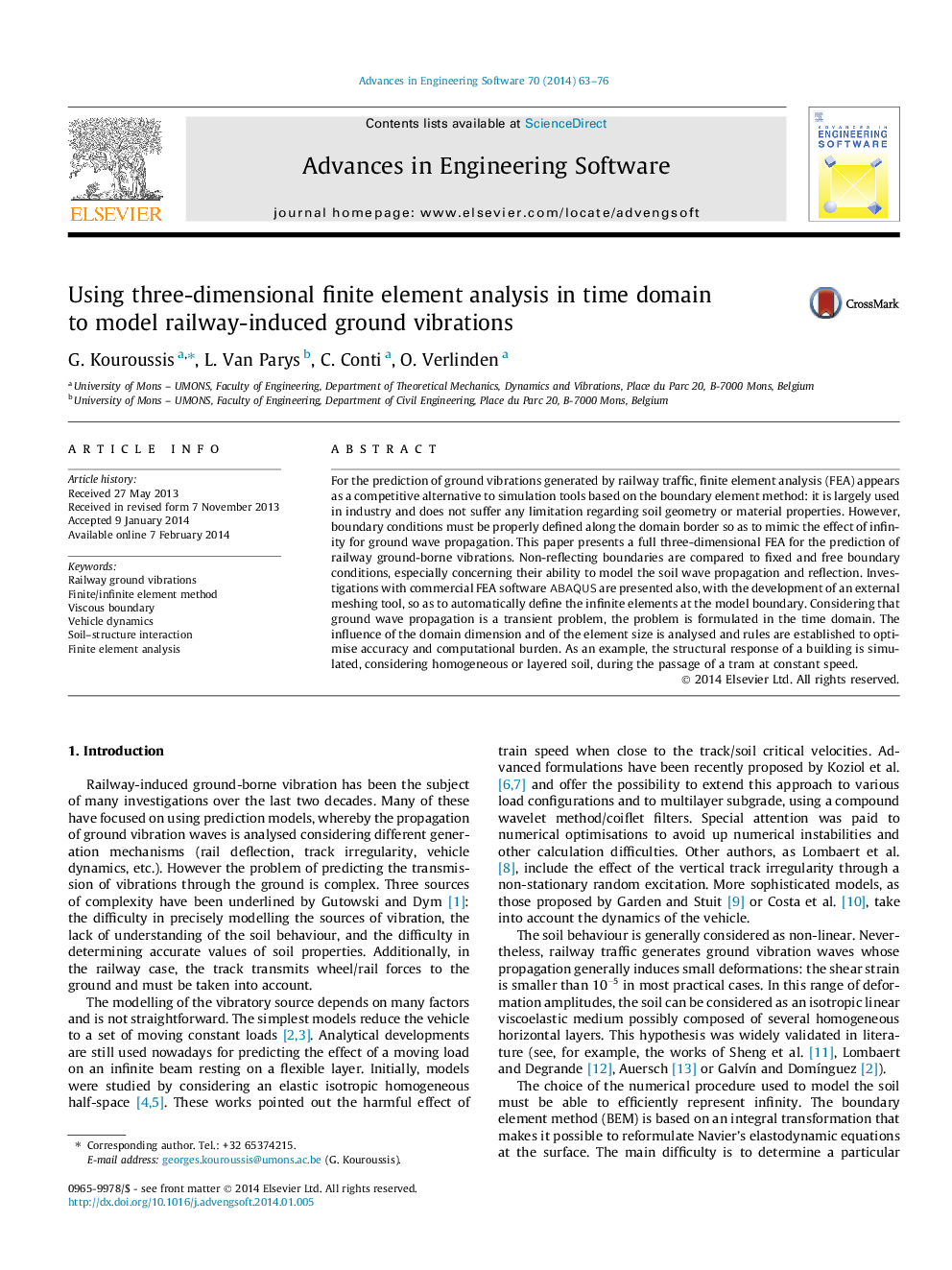| کد مقاله | کد نشریه | سال انتشار | مقاله انگلیسی | نسخه تمام متن |
|---|---|---|---|---|
| 567996 | 1452147 | 2014 | 14 صفحه PDF | دانلود رایگان |
• The finite element analysis is used to assess the ground-borne vibrations.
• Time domain simulation is preferred for reducing the model size.
• Lysmer and Kuhlemeyer absorbing boundary conditions are analysed.
• Structural vibrations are calculated for realistic cases.
• A mesh tool is presented to automatically add infinite elements in ABAQUS model.
For the prediction of ground vibrations generated by railway traffic, finite element analysis (FEA) appears as a competitive alternative to simulation tools based on the boundary element method: it is largely used in industry and does not suffer any limitation regarding soil geometry or material properties. However, boundary conditions must be properly defined along the domain border so as to mimic the effect of infinity for ground wave propagation. This paper presents a full three-dimensional FEA for the prediction of railway ground-borne vibrations. Non-reflecting boundaries are compared to fixed and free boundary conditions, especially concerning their ability to model the soil wave propagation and reflection. Investigations with commercial FEA software ABAQUS are presented also, with the development of an external meshing tool, so as to automatically define the infinite elements at the model boundary. Considering that ground wave propagation is a transient problem, the problem is formulated in the time domain. The influence of the domain dimension and of the element size is analysed and rules are established to optimise accuracy and computational burden. As an example, the structural response of a building is simulated, considering homogeneous or layered soil, during the passage of a tram at constant speed.
Journal: Advances in Engineering Software - Volume 70, April 2014, Pages 63–76
